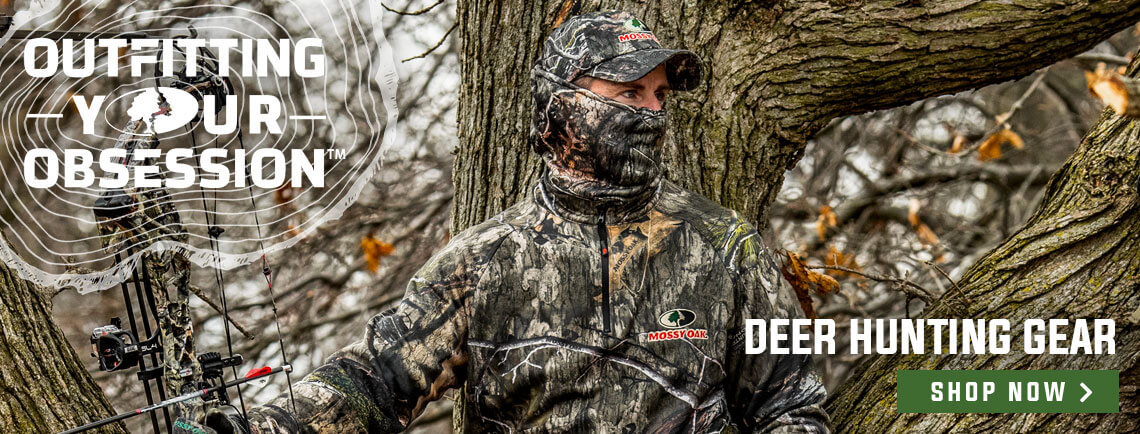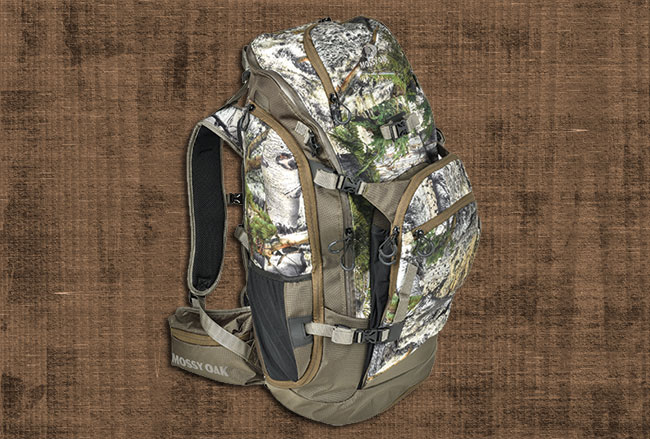D.J. Randolph | Mossy Oak ProStaff
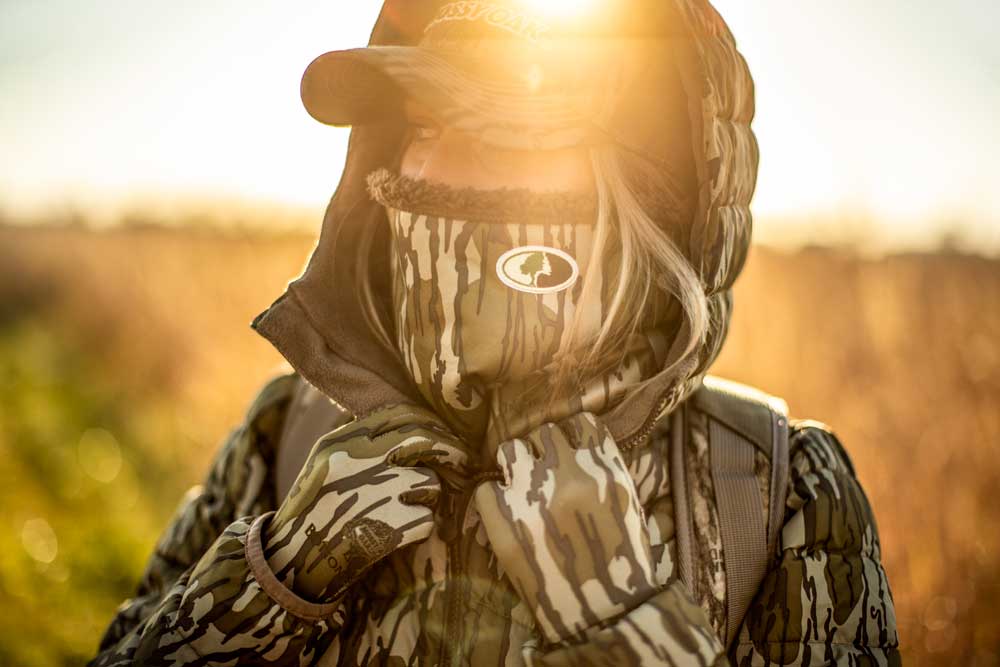
Cold weather means whitetails are going to be on their feet more than normal. So, you have choices to make. Stay at home and watch hunting shows on TV, go to the field and be miserable or embrace the cold and learn how to make the most of it.
I have lived in North Dakota for 26 years. In that time, I have hunted some very harsh conditions. It’s never an easy hunt but the rewards can make it well worth the effort. There are many factors involved in comfortably hunting cold weather including proper preparation, quality clothing, individual tolerances and plain ole determination.
Here are some of my tips for not just surviving a cold weather hunt but actually enjoying it.
How to Dress for Cold Weather
Feet - Most people have trouble keeping their feet warm. I have tried just about everything out there and have finally figured out what works for me. The first rule is that your boots need to fit loosely. Tight boots restrict your circulation and reduced blood flow will cause your toes to get cold.
The second rule is no cotton allowed. Cotton absorbs and holds moisture and damp feet will surely get cold quickly. I have found that what works best for me is 1200-1500 gram Thinsulate rubber boots. If your feet sweat when you are walking in, consider taking a pair of fresh, dry socks to change into when you reach your stand or blind. For socks, I prefer a heavy merino wool or wool blend. You may also want to wear a wicking sock of some kind if you sweat a lot. With these loose-fitting boots and quality socks, I will add a chemical toe warmer and my feet rarely ever get cold.
Head - It’s debatable how much heat we lose through our head, but I have found that your head is a very good thermostat for controlling how your body handles cold. When walking in, I try to wear something very light or nothing at all on my head. This reduces how much I sweat on the walk in. Once in the stand, it’s important to keep the face and head warm. As hunters we are usually facing the wind. Staring into a cold wind will cause you to get cold quickly and can also cause some nasty headaches. I like an insulated, full face mask that fits fairly snug. You don’t want your face mask moving around when you do. If it’s very cold, I will add a heavy beanie or even a balaclava on top of the face mask.
Hands - Once again, just say no to cotton. Personally, I don’t shoot well in gloves. I like a tight, lightweight glove. I then use a heavily insulated hand muff and only take my hands out when needed. I usually have 2-4 chemical hand warmers in the muff, so my hands heat up very quickly when I put them back in.
Dress in Layers
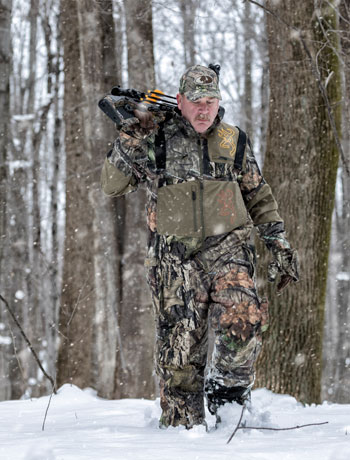 Base Layers - Modern long underwear is considerably better than what we had years ago. Once again, remember the rule, no cotton allowed. There are many quality polyester blends on the market. I have found that these work very well for a more active hunt or in moderate temperatures. When it’s really cold and I am going to be sitting, I go back to merino wool. Good merino wool clothing is a little more expensive and isn’t as durable as the polyester blends, but nothing keeps me warmer and dryer.
Base Layers - Modern long underwear is considerably better than what we had years ago. Once again, remember the rule, no cotton allowed. There are many quality polyester blends on the market. I have found that these work very well for a more active hunt or in moderate temperatures. When it’s really cold and I am going to be sitting, I go back to merino wool. Good merino wool clothing is a little more expensive and isn’t as durable as the polyester blends, but nothing keeps me warmer and dryer.
Mid Layers - I am a big believer in layers. If you are bowhunting, it’s important not to get too much bulk. A good windproof vest helps keep your core warm and doesn’t add bulk through the shoulders. My other layers are usually mid-weight shirts and jackets that I can use as an outer layer or as a mid-layer as the temps drop further. This is where I like to add a windproof layer or two.
Outerwear - Everyone has their own preference here. Because I primarily bowhunt, my first concern is noise. A fabric that is quiet in the store at 70 degrees may not be quiet when the temps are in the single digits or worse. For that reason, I really like fleece or wool for an outer layer. My favorite combination of outerwear is a good set of insulated hunting bibs with a midweight jacket over top of my other layers. Insulated bibs help keep the core warm and reduce those drafts around the lower back while not adding any bulk through the shoulders. I also have an older Heater Body Suit. This is an awesome piece of equipment that can change a hunt from being bearable to actually being comfortable. IWOM is another full containment suit that I would assume does a comparable job.
Stay Cool During Your Approach
I usually carry as many clothes as I wear on the way in. If you build up a sweat on the way in, you are going to cool down very quickly once you sit still. I like to get to the stand or blind and allow myself 10 minutes or so to cool down before I finish getting dressed. Take your time getting dressed to make sure all those layers are fitting comfortably. I sometimes change my socks when I get to my stand.
Take Snacks
Your body burns calories to stay warm. Make sure that you have enough calories available. I usually eat a high-calorie meal before heading out and take a lot of snacks with me. Stick with complex carbs and proteins. They last a lot longer than the sweeter, simple carbs that we all crave when we are hunting.
Hunt Smart
Chemical Warmers - I use a lot of these. The ones made for toes are a wonderful. I use hand warmers or larger warmers in my hand muff. If it’s very cold, I also use these warmers in my internal pockets. Those little warm spots next your skin are very comforting on a long cold sit. The large warmers with a sticky back feel great on the lower back during a long sit.
Rechargeable Hand Warmers - I just started using these last year. They work very well. You just have to remember to charge them before each hunt.
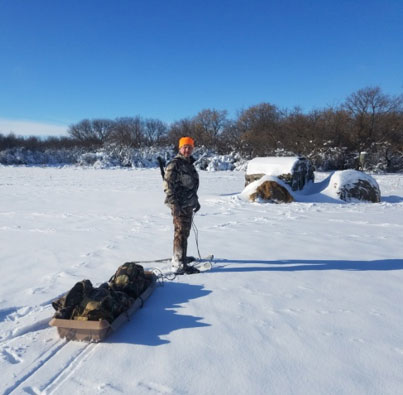 December of 2016 brought severe cold and a blizzard to North Dakota. Fellow Prostaffer Jeff Sekich had to delay his trip for three days while the roads cleared to come hunt with me. We tried a couple of my favorite spots, but deep snow, cold temps and high winds had pushed the deer into heavier cover. Finally, the wind was right on December 6 for Jeff to hunt a great blind in the river bottom behind my house where I have a 2-acre corn plot. As shooting light was fading, he was debating on filling his tag on a healthy doe when he saw antlers coming through the trees. A few minutes later he was able to fill his first archery whitetail tag on a great North Dakota buck. I had never had this buck on camera before. This deer obviously had moved to the river bottom for better cover and better food sources.
December of 2016 brought severe cold and a blizzard to North Dakota. Fellow Prostaffer Jeff Sekich had to delay his trip for three days while the roads cleared to come hunt with me. We tried a couple of my favorite spots, but deep snow, cold temps and high winds had pushed the deer into heavier cover. Finally, the wind was right on December 6 for Jeff to hunt a great blind in the river bottom behind my house where I have a 2-acre corn plot. As shooting light was fading, he was debating on filling his tag on a healthy doe when he saw antlers coming through the trees. A few minutes later he was able to fill his first archery whitetail tag on a great North Dakota buck. I had never had this buck on camera before. This deer obviously had moved to the river bottom for better cover and better food sources.
A few days later, in the same blind with even more snow and sub-zero temps, I had technical difficulties with my old muzzleloader and this nice 5x6 got away from me. I was back in the blind on December 12 with bow in hand. By this time, the snow was over 30-inches deep and the temps were around -8. The same 5x6 and several other deer were browsing around in the woods for a very long time. I knew as light started fading, they would be making their way to the corn plot. They had several trails to choose from. Lucky for me this buck decided to follow some does down a trail that led right past my blind. He jumped the fence and gave me a great shot at 22 yards. He only ran about 100 yards back into the woods but the deep snow made for a tough recovery. This is where the sled is a life saver. Once again, this is a buck that had never shown up on camera before the storms. Food that is adjacent to cover makes all the difference when the weather gets nasty.
Hunting late season can be very demanding but it can also be very rewarding. There is nothing quite like watching wildlife on a beautiful snow covered day.
Hunt safe and Pass It On!

